Sabit Hassan
Contextual ASR Error Handling with LLMs Augmentation for Goal-Oriented Conversational AI
Jan 10, 2025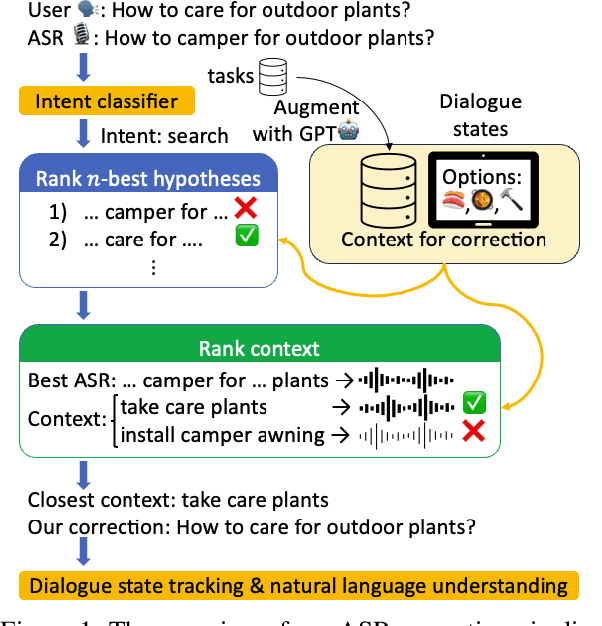



Abstract:General-purpose automatic speech recognition (ASR) systems do not always perform well in goal-oriented dialogue. Existing ASR correction methods rely on prior user data or named entities. We extend correction to tasks that have no prior user data and exhibit linguistic flexibility such as lexical and syntactic variations. We propose a novel context augmentation with a large language model and a ranking strategy that incorporates contextual information from the dialogue states of a goal-oriented conversational AI and its tasks. Our method ranks (1) n-best ASR hypotheses by their lexical and semantic similarity with context and (2) context by phonetic correspondence with ASR hypotheses. Evaluated in home improvement and cooking domains with real-world users, our method improves recall and F1 of correction by 34% and 16%, respectively, while maintaining precision and false positive rate. Users rated .8-1 point (out of 5) higher when our correction method worked properly, with no decrease due to false positives.
Coherence-Driven Multimodal Safety Dialogue with Active Learning for Embodied Agents
Oct 18, 2024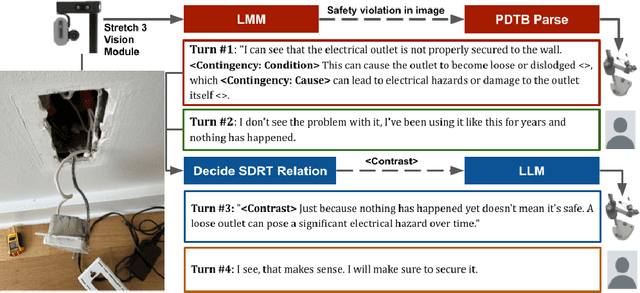

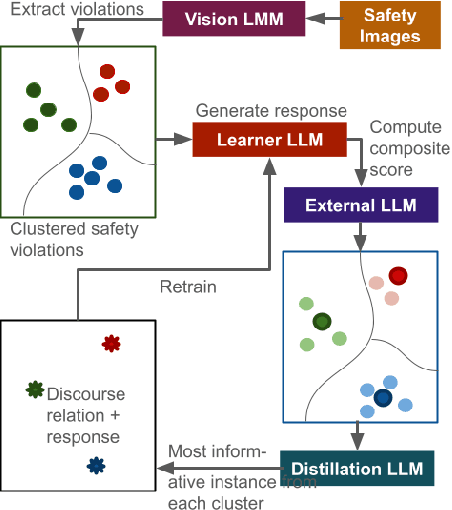

Abstract:When assisting people in daily tasks, robots need to accurately interpret visual cues and respond effectively in diverse safety-critical situations, such as sharp objects on the floor. In this context, we present M-CoDAL, a multimodal-dialogue system specifically designed for embodied agents to better understand and communicate in safety-critical situations. The system leverages discourse coherence relations to enhance its contextual understanding and communication abilities. To train this system, we introduce a novel clustering-based active learning mechanism that utilizes an external Large Language Model (LLM) to identify informative instances. Our approach is evaluated using a newly created multimodal dataset comprising 1K safety violations extracted from 2K Reddit images. These violations are annotated using a Large Multimodal Model (LMM) and verified by human annotators. Results with this dataset demonstrate that our approach improves resolution of safety situations, user sentiment, as well as safety of the conversation. Next, we deploy our dialogue system on a Hello Robot Stretch robot and conduct a within-subject user study with real-world participants. In the study, participants role-play two safety scenarios with different levels of severity with the robot and receive interventions from our model and a baseline system powered by OpenAI's ChatGPT. The study results corroborate and extend the findings from automated evaluation, showing that our proposed system is more persuasive and competent in a real-world embodied agent setting.
An Active Learning Framework for Inclusive Generation by Large Language Models
Oct 17, 2024Abstract:Ensuring that Large Language Models (LLMs) generate text representative of diverse sub-populations is essential, particularly when key concepts related to under-represented groups are scarce in the training data. We address this challenge with a novel clustering-based active learning framework, enhanced with knowledge distillation. The proposed framework transforms the intermediate outputs of the learner model, enabling effective active learning for generative tasks for the first time. Integration of clustering and knowledge distillation yields more representative models without prior knowledge of underlying data distribution and overbearing human efforts. We validate our approach in practice through case studies in counter-narration and style transfer. We construct two new datasets in tandem with model training, showing a performance improvement of 2%-10% over baseline models. Our results also show more consistent performance across various data subgroups and increased lexical diversity, underscoring our model's resilience to skewness in available data. Further, our results show that the data acquired via our approach improves the performance of secondary models not involved in the learning loop, showcasing practical utility of the framework.
Active Learning for Robust and Representative LLM Generation in Safety-Critical Scenarios
Oct 14, 2024Abstract:Ensuring robust safety measures across a wide range of scenarios is crucial for user-facing systems. While Large Language Models (LLMs) can generate valuable data for safety measures, they often exhibit distributional biases, focusing on common scenarios and neglecting rare but critical cases. This can undermine the effectiveness of safety protocols developed using such data. To address this, we propose a novel framework that integrates active learning with clustering to guide LLM generation, enhancing their representativeness and robustness in safety scenarios. We demonstrate the effectiveness of our approach by constructing a dataset of 5.4K potential safety violations through an iterative process involving LLM generation and an active learner model's feedback. Our results show that the proposed framework produces a more representative set of safety scenarios without requiring prior knowledge of the underlying data distribution. Additionally, data acquired through our method improves the accuracy and F1 score of both the active learner model as well models outside the scope of active learning process, highlighting its broad applicability.
DisCGen: A Framework for Discourse-Informed Counterspeech Generation
Nov 29, 2023
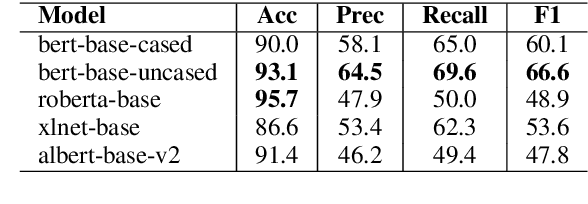
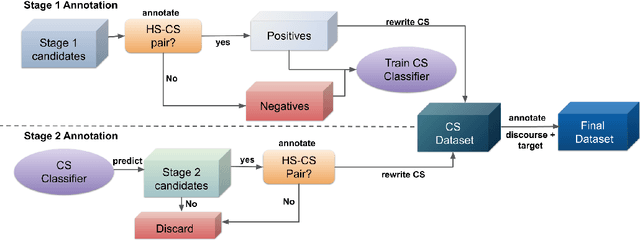
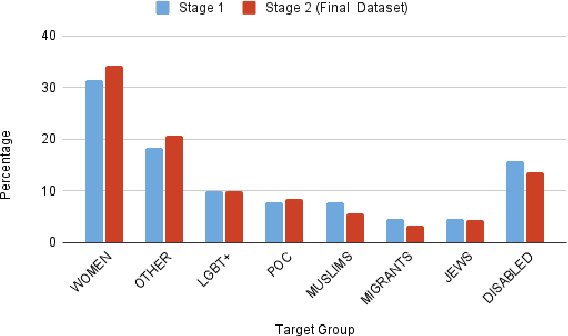
Abstract:Counterspeech can be an effective method for battling hateful content on social media. Automated counterspeech generation can aid in this process. Generated counterspeech, however, can be viable only when grounded in the context of topic, audience and sensitivity as these factors influence both the efficacy and appropriateness. In this work, we propose a novel framework based on theories of discourse to study the inferential links that connect counter speeches to the hateful comment. Within this framework, we propose: i) a taxonomy of counterspeech derived from discourse frameworks, and ii) discourse-informed prompting strategies for generating contextually-grounded counterspeech. To construct and validate this framework, we present a process for collecting an in-the-wild dataset of counterspeech from Reddit. Using this process, we manually annotate a dataset of 3.9k Reddit comment pairs for the presence of hatespeech and counterspeech. The positive pairs are annotated for 10 classes in our proposed taxonomy. We annotate these pairs with paraphrased counterparts to remove offensiveness and first-person references. We show that by using our dataset and framework, large language models can generate contextually-grounded counterspeech informed by theories of discourse. According to our human evaluation, our approaches can act as a safeguard against critical failures of discourse-agnostic models.
MedNgage: A Dataset for Understanding Engagement in Patient-Nurse Conversations
May 31, 2023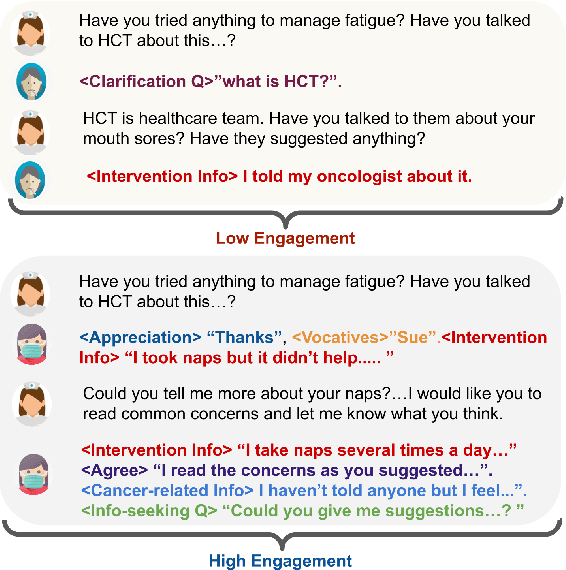
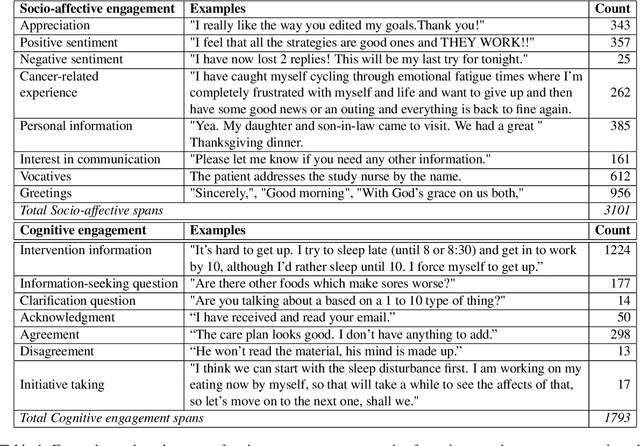
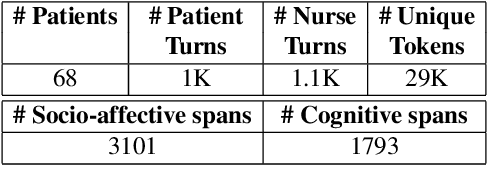
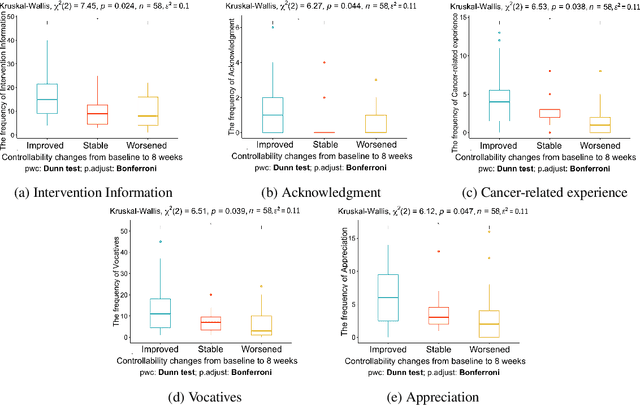
Abstract:Patients who effectively manage their symptoms often demonstrate higher levels of engagement in conversations and interventions with healthcare practitioners. This engagement is multifaceted, encompassing cognitive and socio-affective dimensions. Consequently, it is crucial for AI systems to understand the engagement in natural conversations between patients and practitioners to better contribute toward patient care. In this paper, we present a novel dataset (MedNgage), which consists of patient-nurse conversations about cancer symptom management. We manually annotate the dataset with a novel framework of categories of patient engagement from two different angles, namely: i) socio-affective engagement (3.1K spans), and ii) cognitive engagement (1.8K spans). Through statistical analysis of the data that is annotated using our framework, we show a positive correlation between patient symptom management outcomes and their engagement in conversations. Additionally, we demonstrate that pre-trained transformer models fine-tuned on our dataset can reliably predict engagement categories in patient-nurse conversations. Lastly, we use LIME (Ribeiro et al., 2016) to analyze the underlying challenges of the tasks that state-of-the-art transformer models encounter. The de-identified data is available for research purposes upon request.
D-CALM: A Dynamic Clustering-based Active Learning Approach for Mitigating Bias
May 26, 2023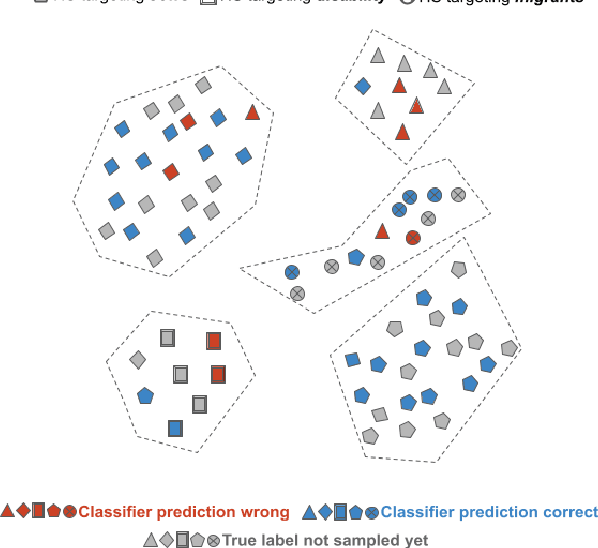
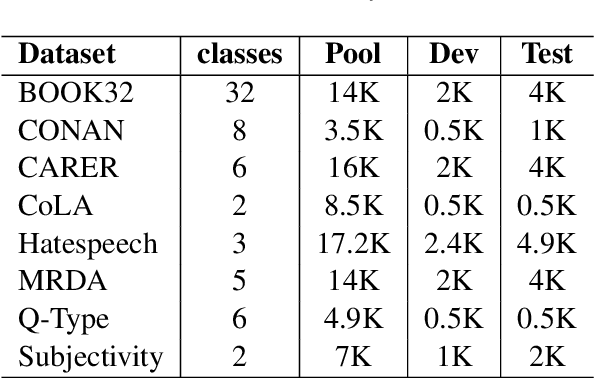
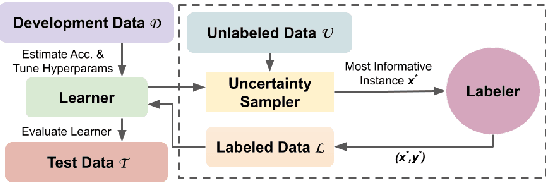
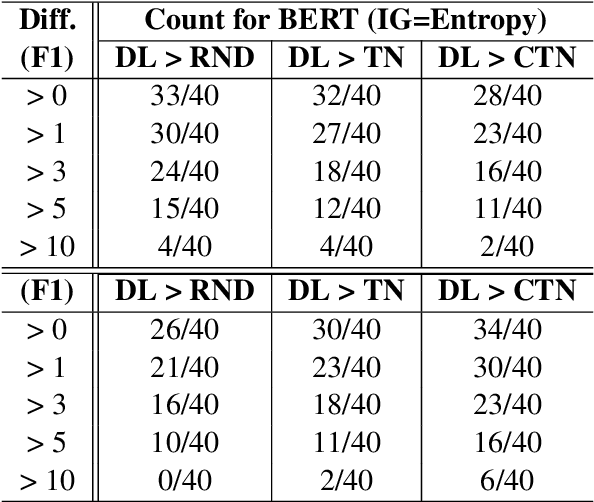
Abstract:Despite recent advancements, NLP models continue to be vulnerable to bias. This bias often originates from the uneven distribution of real-world data and can propagate through the annotation process. Escalated integration of these models in our lives calls for methods to mitigate bias without overbearing annotation costs. While active learning (AL) has shown promise in training models with a small amount of annotated data, AL's reliance on the model's behavior for selective sampling can lead to an accumulation of unwanted bias rather than bias mitigation. However, infusing clustering with AL can overcome the bias issue of both AL and traditional annotation methods while exploiting AL's annotation efficiency. In this paper, we propose a novel adaptive clustering-based active learning algorithm, D-CALM, that dynamically adjusts clustering and annotation efforts in response to an estimated classifier error-rate. Experiments on eight datasets for a diverse set of text classification tasks, including emotion, hatespeech, dialog act, and book type detection, demonstrate that our proposed algorithm significantly outperforms baseline AL approaches with both pretrained transformers and traditional Support Vector Machines. D-CALM showcases robustness against different measures of information gain and, as evident from our analysis of label and error distribution, can significantly reduce unwanted model bias.
Multilingual Content Moderation: A Case Study on Reddit
Feb 19, 2023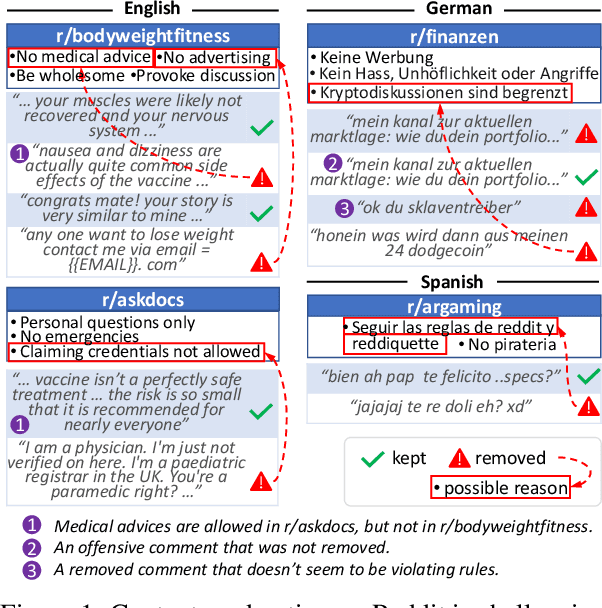
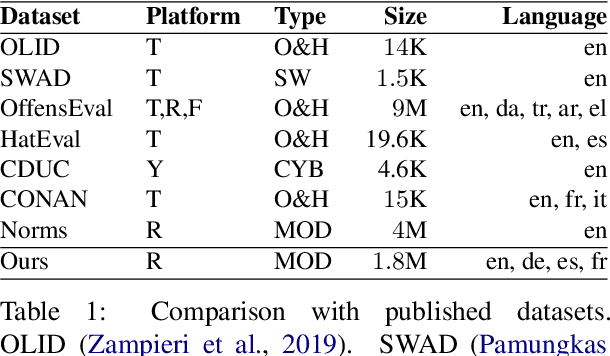
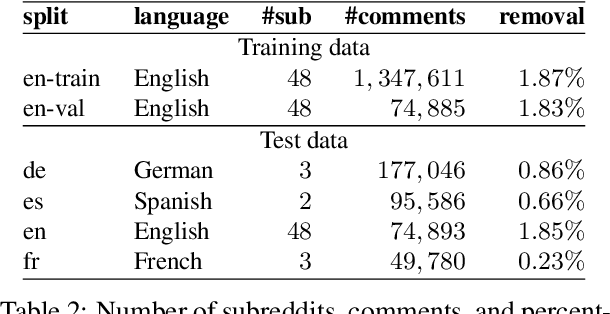
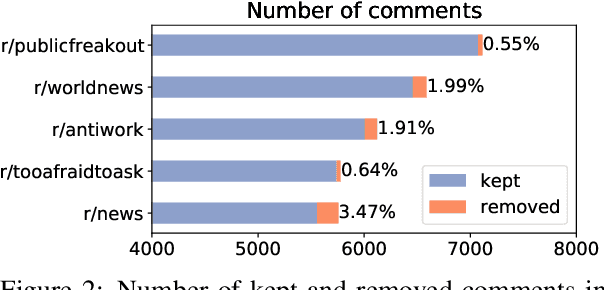
Abstract:Content moderation is the process of flagging content based on pre-defined platform rules. There has been a growing need for AI moderators to safeguard users as well as protect the mental health of human moderators from traumatic content. While prior works have focused on identifying hateful/offensive language, they are not adequate for meeting the challenges of content moderation since 1) moderation decisions are based on violation of rules, which subsumes detection of offensive speech, and 2) such rules often differ across communities which entails an adaptive solution. We propose to study the challenges of content moderation by introducing a multilingual dataset of 1.8 Million Reddit comments spanning 56 subreddits in English, German, Spanish and French. We perform extensive experimental analysis to highlight the underlying challenges and suggest related research problems such as cross-lingual transfer, learning under label noise (human biases), transfer of moderation models, and predicting the violated rule. Our dataset and analysis can help better prepare for the challenges and opportunities of auto moderation.
APPDIA: A Discourse-aware Transformer-based Style Transfer Model for Offensive Social Media Conversations
Sep 17, 2022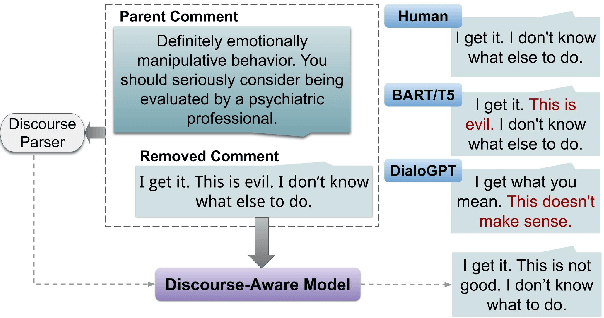
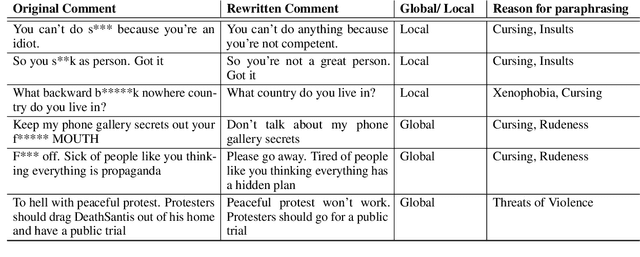

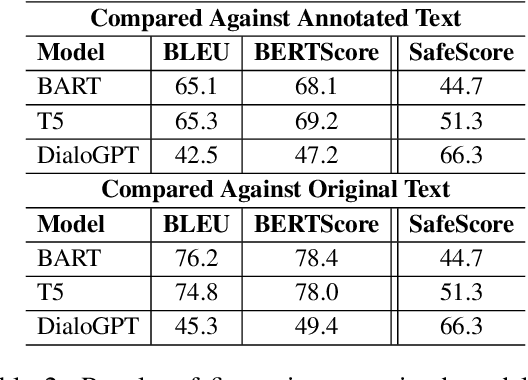
Abstract:Using style-transfer models to reduce offensiveness of social media comments can help foster a more inclusive environment. However, there are no sizable datasets that contain offensive texts and their inoffensive counterparts, and fine-tuning pretrained models with limited labeled data can lead to the loss of original meaning in the style-transferred text. To address this issue, we provide two major contributions. First, we release the first publicly-available, parallel corpus of offensive Reddit comments and their style-transferred counterparts annotated by expert sociolinguists. Then, we introduce the first discourse-aware style-transfer models that can effectively reduce offensiveness in Reddit text while preserving the meaning of the original text. These models are the first to examine inferential links between the comment and the text it is replying to when transferring the style of offensive Reddit text. We propose two different methods of integrating discourse relations with pretrained transformer models and evaluate them on our dataset of offensive comments from Reddit and their inoffensive counterparts. Improvements over the baseline with respect to both automatic metrics and human evaluation indicate that our discourse-aware models are better at preserving meaning in style-transferred text when compared to the state-of-the-art discourse-agnostic models.
Modeling Intensification for Sign Language Generation: A Computational Approach
Mar 18, 2022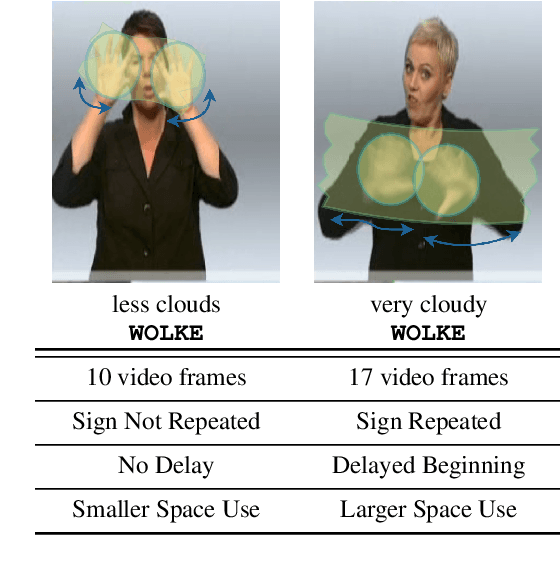
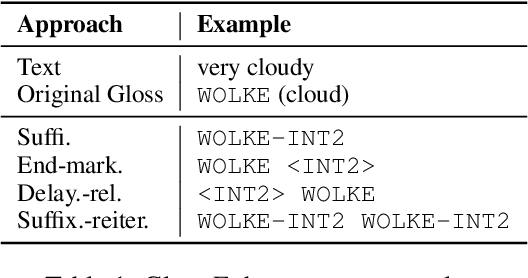
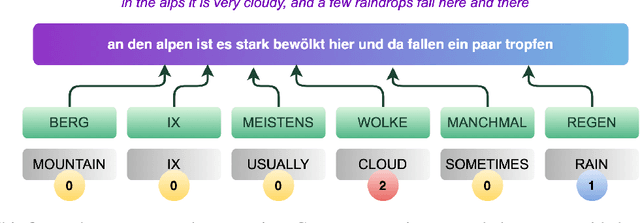
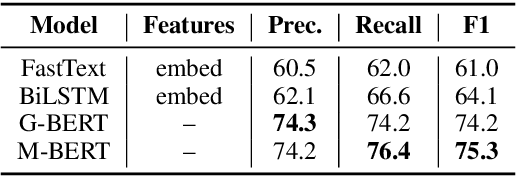
Abstract:End-to-end sign language generation models do not accurately represent the prosody in sign language. A lack of temporal and spatial variations leads to poor-quality generated presentations that confuse human interpreters. In this paper, we aim to improve the prosody in generated sign languages by modeling intensification in a data-driven manner. We present different strategies grounded in linguistics of sign language that inform how intensity modifiers can be represented in gloss annotations. To employ our strategies, we first annotate a subset of the benchmark PHOENIX-14T, a German Sign Language dataset, with different levels of intensification. We then use a supervised intensity tagger to extend the annotated dataset and obtain labels for the remaining portion of it. This enhanced dataset is then used to train state-of-the-art transformer models for sign language generation. We find that our efforts in intensification modeling yield better results when evaluated with automatic metrics. Human evaluation also indicates a higher preference of the videos generated using our model.
 Add to Chrome
Add to Chrome Add to Firefox
Add to Firefox Add to Edge
Add to Edge